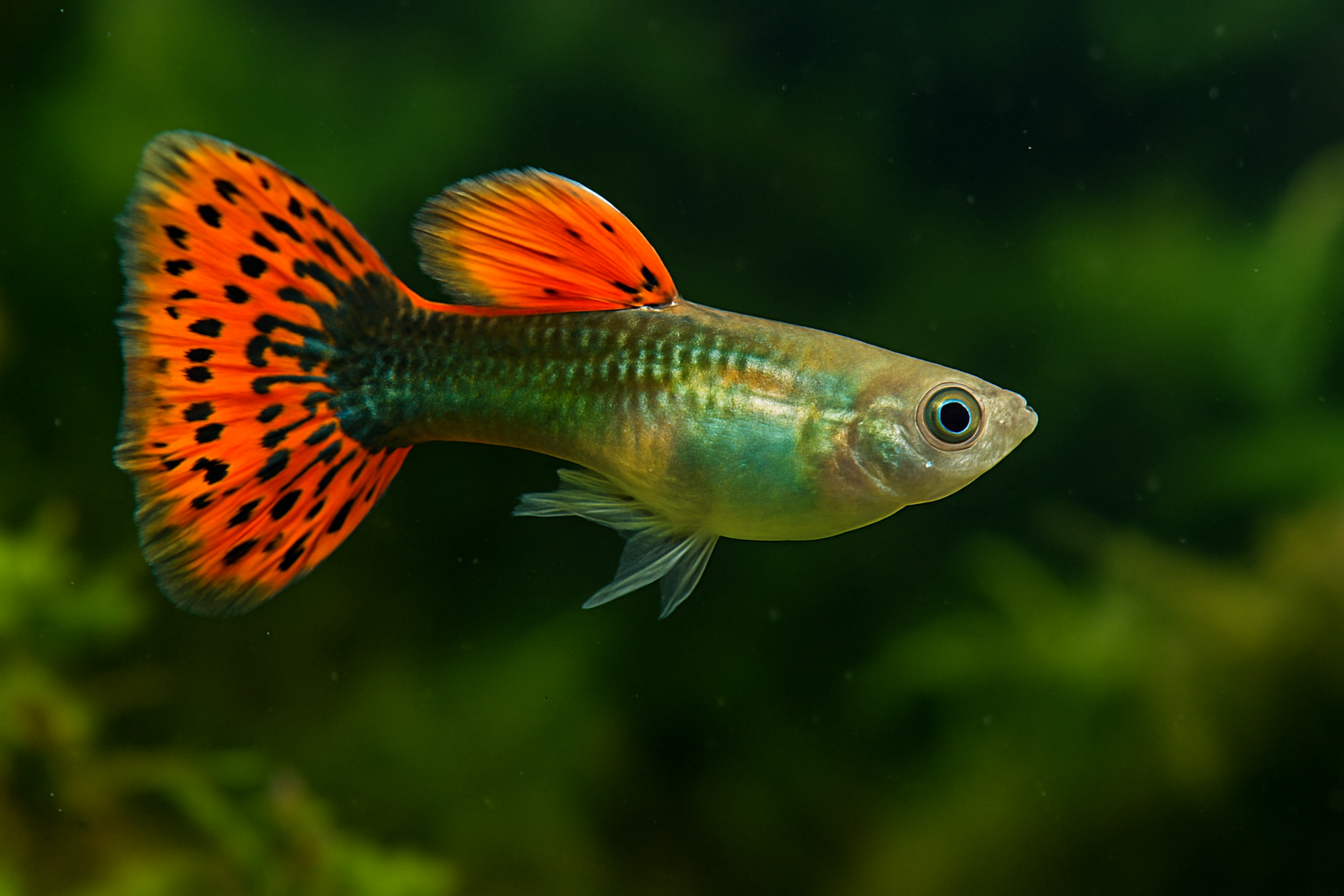Guppies, scientifically known as Poecilia reticulata, are among the most popular freshwater aquarium fish due to their vivid colors, peaceful nature, and ease of care. One of the most fascinating aspects of keeping guppies is observing their swimming behavior. Whether darting playfully, cruising gracefully, or acting strangely, guppy swimming provides essential insights into their health, mood, and environment.
In this comprehensive guide, we’ll explore everything you need to know about guppy swimming—what’s normal, what’s not, and how to ensure your guppies are happy and healthy swimmers.
1. What Does Normal Guppy Swimming Look Like?
Healthy guppies are active and curious swimmers. In a well-maintained aquarium, you’ll notice your guppies:
- Swim freely and energetically throughout all levels of the tank (top, middle, and bottom).
- Interact with other guppies, occasionally chasing or playing.
- Respond quickly to feeding, darting toward food when it’s introduced.
- Display balance and control, with fins held open and no signs of dragging.
Normal swimming also varies slightly depending on gender and age:
- Male guppies tend to swim more actively and chase females.
- Female guppies are a bit more deliberate and calm in their movement.
- Fry (baby guppies) move in quick, twitchy bursts as they learn to navigate the tank.
2. Guppy Swimming Patterns and Their Meanings
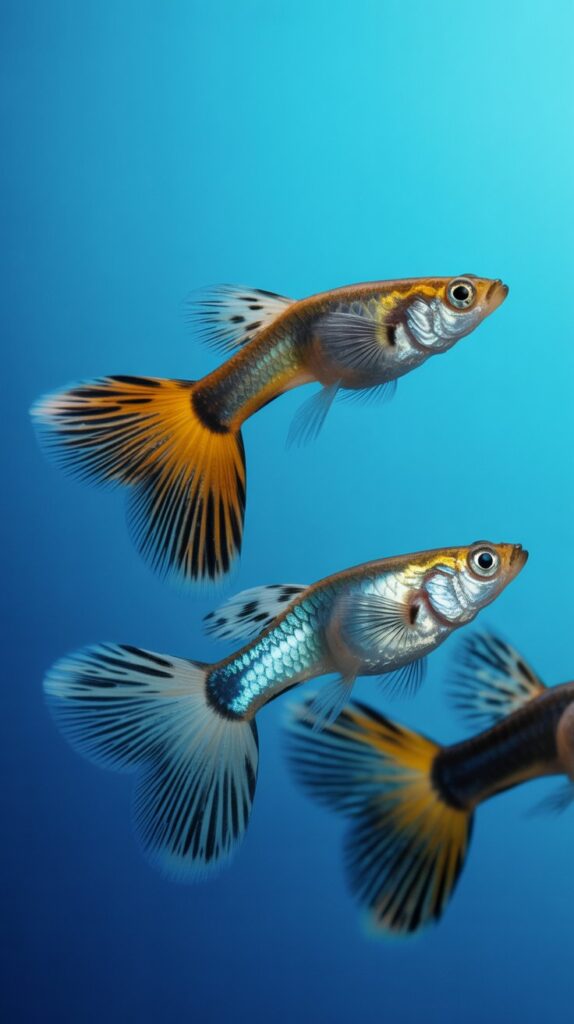
a. Darting and Quick Swimming
This can be a sign of:
- Excitement (e.g., during feeding)
- Avoiding another fish (e.g., chasing)
- Strong water current
b. Hovering in Place
Healthy guppies sometimes hover, especially when observing their surroundings. If they maintain balance with fins moving, it’s normal.
c. Resting or Inactive Swimming
Guppies occasionally rest near plants or corners. As long as they’re not gasping or lying on the substrate, occasional inactivity is normal
3. Abnormal Guppy Swimming Behaviors
Abnormal swimming often signals health issues or poor tank conditions. Here are red flags to watch for:
a. Erratic Swimming
Guppies darting randomly, flipping, or spinning may indicate:
- Poor water quality
- Parasites or infections
- Ammonia or nitrate spike
b. Swimming in Circles
This behavior can be caused by:
- Neurological issues
- Swim bladder disorder
- Toxic substances in water
c. Sinking or Floating
Guppies with buoyancy issues might have:
- Swim bladder disease
- Constipation
- Overfeeding
d. Staying at the Bottom
This may suggest:
- Stress or illness
- Water temperature too low
- Lack of oxygen
e. Staying at the Top and Gasping
Often indicates:
- Low oxygen levels
- Ammonia poisoning
- High temperature
4. Guppy Swimming and Tank Conditions
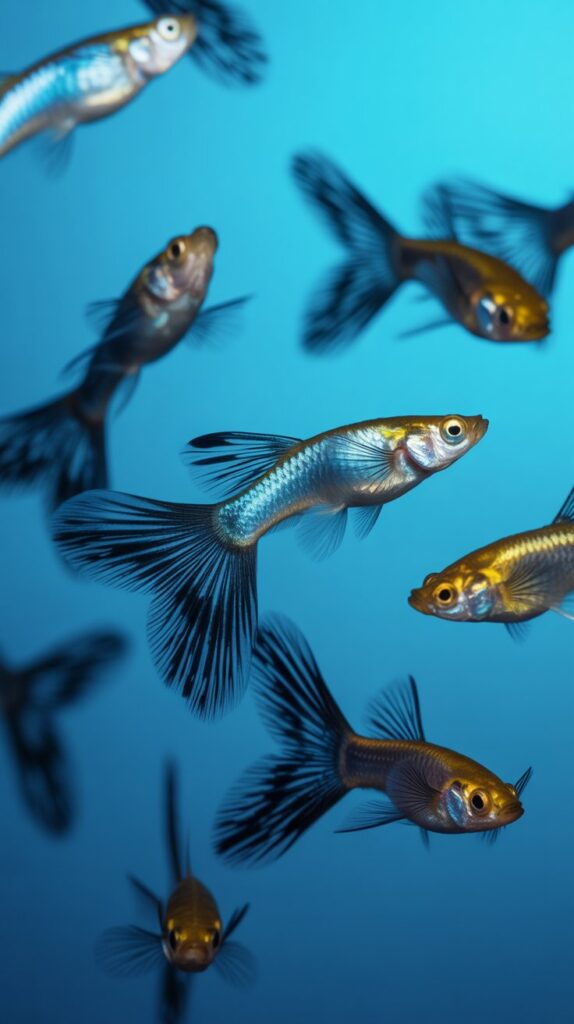
A guppy’s swimming is directly influenced by the aquarium environment. Maintaining ideal tank conditions is critical.
a. Ideal Water Parameters
- Temperature: 24–28°C (75–82°F)
- pH: 6.8–7.8
- Ammonia/Nitrites: 0 ppm
- Nitrates: < 40 ppm
- Water Hardness: Moderate to hard (8–12 dGH)
b. Filtration and Water Movement
Too strong a filter can exhaust guppies, while too weak may allow debris buildup. Use a sponge filter or adjustable flow for optimal balance.
c. Lighting
A regular light cycle (8–12 hours a day) helps regulate guppies’ activity levels. Overexposure or lack of light can affect swimming behavior.
d. Tank Size and Layout
- Minimum tank size: 10 gallons for a small group
- Plants and decorations: Provide hiding and resting spots
- Open space: Allows for natural, unrestricted swimming
5. Guppy Swimming and Social Behavior
a. Guppies Are Social Swimmers
They thrive in groups and enjoy swimming together. A good male-to-female ratio (1:2 or 1:3) reduces stress and excessive chasing.
b. Aggression and Dominance
Excessive chasing or fin-nipping may result in erratic swimming in bullied guppies. Introduce more females or hiding spaces to reduce stress.
c. Schooling vs. Shoaling
While guppies are not true schooling fish, they do shoal—swimming in loose groups for comfort. Loneliness or isolation can cause unusual swimming.
6. Health Issues That Affect Swimming
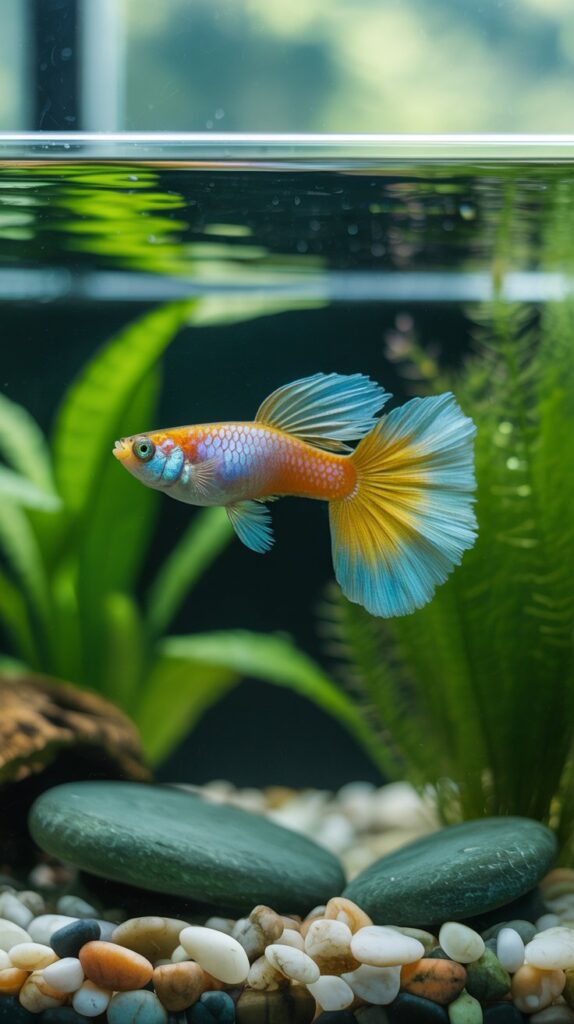
Several illnesses directly impact how guppies swim:
a. Swim Bladder Disorder
Symptoms:
- Floating upside down
- Sinking to the bottom
- Difficulty maintaining balance
Causes:
- Overfeeding
- Constipation
- Bacterial infection
Treatment:
- Fast for 24–48 hours
- Feed peeled peas (fiber)
- Maintain pristine water quality
b. Ich (White Spot Disease)
Signs:
- Rubbing against objects
- Clamped fins
- Labored swimming
Treatment:
- Raise temperature gradually
- Use aquarium salt
- Apply Ich medication
c. Fin Rot
Leads to:
- Weak swimming
- Clamped fins
- Loss of buoyancy
Prevention:
- Clean water
- No overstocking
- Avoid fin-nipping tankmates
7. Guppy Fry Swimming Behavior
Guppy fry swim differently:
- Stay near the surface or hide
- Make rapid, jerky movements
- Avoid adult guppies (due to risk of being eaten)
Tip: Keep fry in a breeder box or separate tank until they grow large enough.
8. Tips for Improving Guppy Swimming Behavior
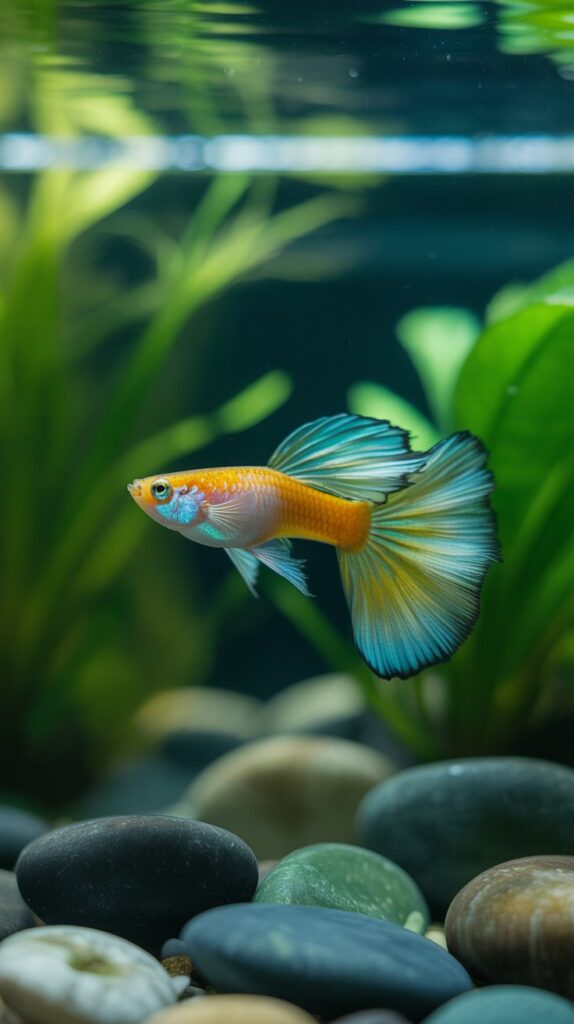
a. Maintain Excellent Water Quality
- Regular water changes (20–30% weekly)
- Use a quality test kit
- Avoid overfeeding
b. Provide a Stimulating Environment
- Live plants (guppy grass, java moss)
- Soft substrate
- Gentle lighting
c. Feed a Balanced Diet
- High-quality flake or pellet food
- Supplement with brine shrimp, daphnia, and bloodworms
- Feed small amounts 2–3 times daily
d. Reduce Stress
- Avoid sudden temperature changes
- Keep compatible tankmates
- Quarantine new fish before adding
9. Observing Your Guppies for Early Warning Signs
Guppy swimming changes are often the first indicator of trouble. Watch for:
- Loss of appetite
- Lethargy or isolation
- Clamped fins
- Darting or gasping
Early detection = easier treatment.
10. Conclusion
Guppy swimming is more than just a beautiful display—it’s a window into your fish’s overall health and well-being. By understanding the nuances of guppy swimming behavior, from normal activity to concerning signs, you become a more informed and attentive aquarist.
Monitor their swimming daily, maintain excellent tank conditions, and provide a loving, stable environment. In return, your guppies will thrive, showing off their vivid colors and playful personalities through vibrant, active swimming.
FAQs About Guppy Swimming
Q1: Why is my guppy swimming sideways or upside down?
This is usually a symptom of swim bladder disorder. It can be caused by overfeeding, constipation, or infections.
Q2: My guppy is swimming at the surface and gasping—what should I do?
Check for low oxygen levels, high ammonia, or high temperature. Improve aeration, perform a water change, and test your water immediately.
Q3: Is it normal for guppies to rest at the bottom of the tank?
Occasional resting is normal, especially at night. But if they stay there for long, it may signal illness or stress.
Q4: Why is my guppy swimming in circles?
Circling can be caused by neurological issues, parasites, or toxin exposure. Remove any possible contaminants and monitor closely.
Q5: Can poor diet affect swimming behavior?
Yes. Lack of fiber or poor nutrition can lead to constipation and swim bladder issues. Feed a balanced diet including live or frozen foods.
Q6: How do I prevent abnormal swimming in guppies?
Maintain excellent water quality, feed a balanced diet, reduce stress, and quarantine new fish to prevent disease.
Q7: How often should I observe my guppies’ swimming behavior?
Daily observation is recommended. Look for changes in activity, positioning, or interaction with tankmates.
Q8: Should guppies always swim in groups?
While not true schooling fish, guppies feel safer and are more active in groups. Keeping at least 3–6 guppies is ideal.

